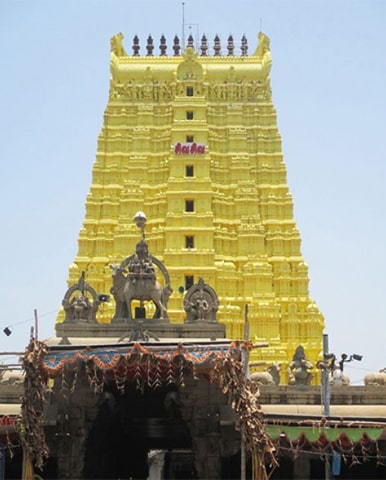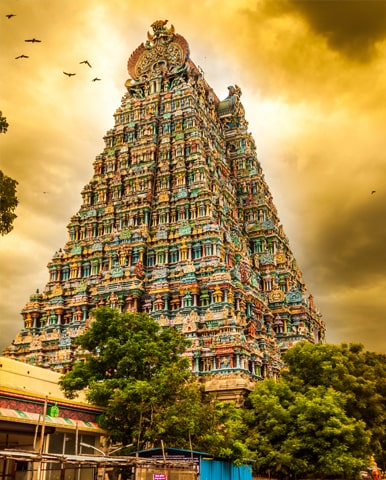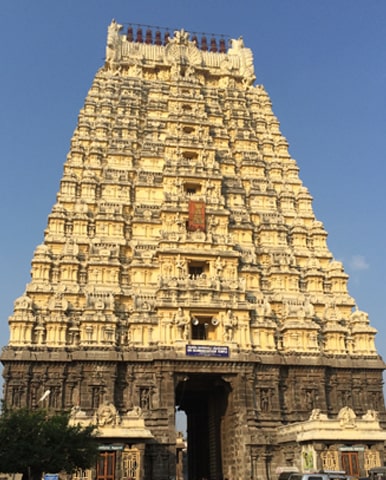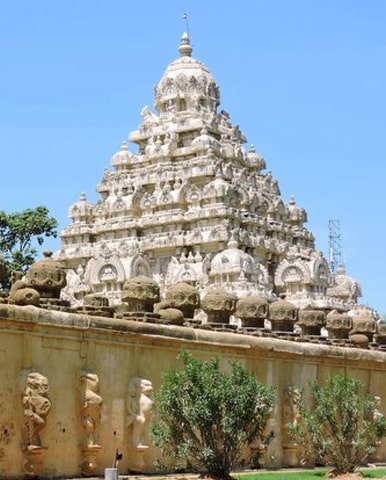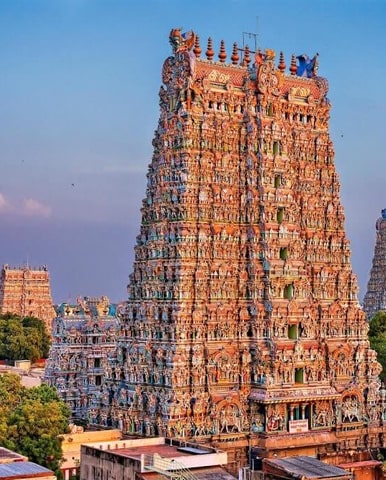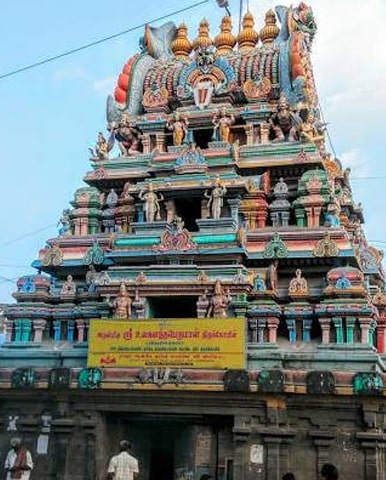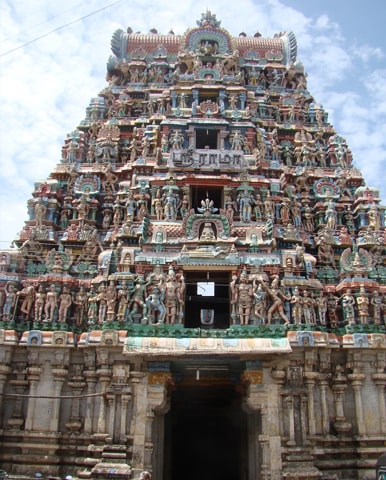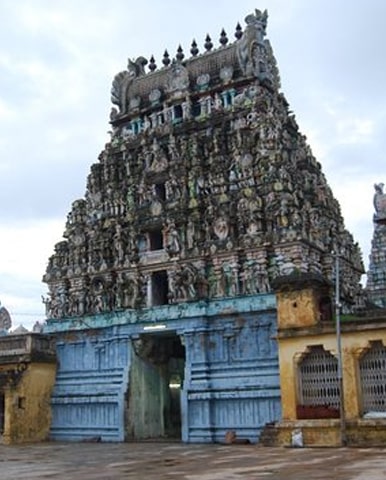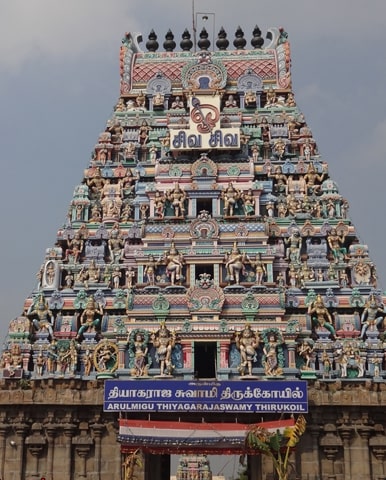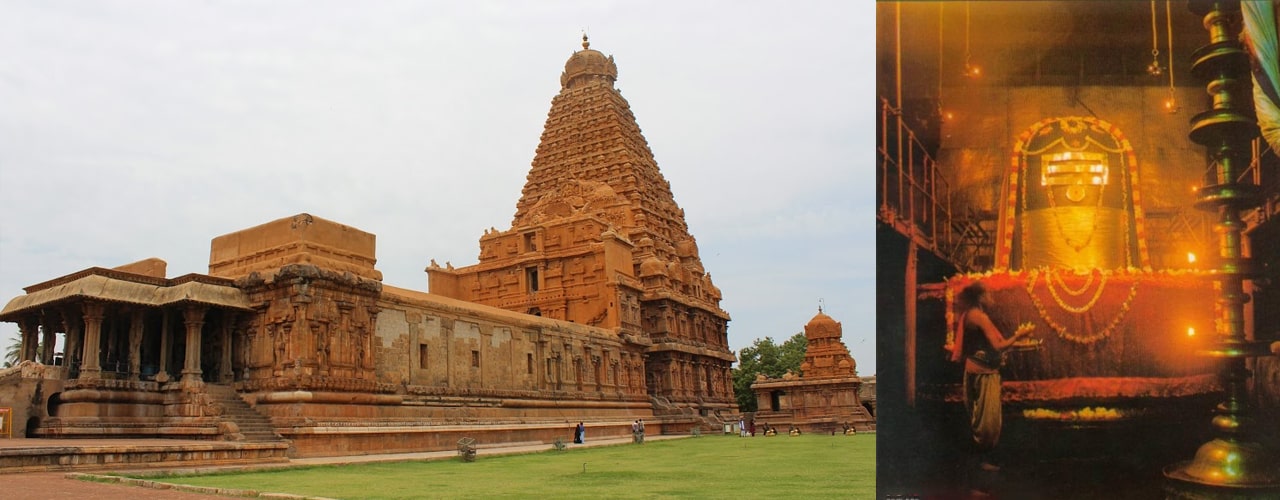
Brihadeeswara Temple, Thanjavur
Brihadishvara Temple, additionally called Rajarajesvaram or Peruvudaiyār okayōvil, is a Hindu temple committed to Shiva positioned in South financial institution of Kaveri river in Thanjavur, Tamil Nadu, India.It is one in every of the most important South Indian temples and an exemplary instance of a completely found out Dravidian structure.It’s miles called as Dhakshina Meru (Meru of south).Built by using Tamil king Raja Raja Chola I between 1003 and 1010 ad, the temple is a part of the UNESCO international background site referred to as the “tremendous dwelling Chola Temples”, along side the Chola dynasty era Gangaikonda Cholapuram temple and Airavatesvara temple that are approximately 70 kilometres (43 mi) and 40 kilometres (25 mi) to its northeast respectively. The authentic monuments of this 11th century temple had been built around a moat. It protected gopura, the primary temple, its massive tower, inscriptions, frescoes and sculptures predominantly associated with Shaivism, however also of Vaishnavism and Shaktism traditions of Hinduism. The temple become damaged in its history and a few artwork is now lacking. Additional mandapam and monuments were delivered in centuries that accompanied. The temple now stands amidst fortified walls that were brought after the 16th century.
Built out of granite, the vimana tower above the sanctum is one of the tallest in South India.It turned into, likely, one of the tallest systems in the global on the time of its construction.The temple has a massive colonnaded prakara (hall) and one among the largest Shiva lingas in India.It’s also famed for the pleasant of its sculpture, in addition to being the area that commissioned the brass Nataraja – Shiva as the lord of dance, in 11th century. The complex includes shrines for Nandi, Parvati, Kartikeya, Ganesha, Sabhapati, Dakshinamurti, Chandeshvara, Varahi and others.The temple is one of the most visited tourist sights in Tamil Nadu.
The Brihadeshvara temple plan and development makes use of the axial and symmetrical geometry regulations.It’s miles categorised as Perunkoil (additionally known as Madakkoil), a massive temple built on a better platform of a herbal or man-made mounds.The temple complex is a rectangle this is almost two stacked squares, covering 240.Seventy nine metres (790.Zero feet) east to west, and 121.92 metres (four hundred.0 ft) north to south. On this space are 5 principal sections: the sanctum with the towering superstructure (sri vimana), the Nandi hall in the front (Nandi-mandapam) and in among those the main community corridor (mukhamandapam), the great amassing corridor (mahamandapam) and the pavilion that connects the outstanding corridor with the sanctum (ardhamandapam).
The temple complex integrates a huge pillared and protected veranda (prakara) in its spacious courtyard, with a perimeter of about 450 metres (1,480 feet) for circumambulation. Out of doors this pillared veranda there are two partitions of enclosure, the outer one being shielding and delivered in 1777 CE through the French colonial forces with gun-holes with the temple serving as an arsenal. They made the outer wall excessive, setting apart the temple complicated region. On its east stop is the unique primary gopuram or gateway this is barrel vaulted. It’s far much less than 1/2 the size of the primary temple’s vimana. Extra structures had been introduced to the authentic temple after the eleventh century, inclusive of a mandapa in its northeast corner and additional gopurams (gateways) on its perimeters to allow people to enter and go away from multiple places.Some of the shrines and systems had been added at some stage in the Pandya, Nayaka, Vijayanagara and Maratha era, before the colonial era began, and these builders respected the unique plans and symmetry guidelines. Within the original temple courtyard, along side the primary sanctum and Nandi-mandapam are two essential shrines, one for Kartikeya and for Parvati. The complex has additional smaller shrines.
Share This Post:
How to reach
- By Road: Thanjavur is well-connected to many cities of Tamil Nadu by road. National highways that pass through the city are NH 67, NH 45C, and NH 226. These highways connect the city to Tiruchirapalli, Coimbatore, Pudukottai and many more.
- By Train: Thanjavur is connected to nearby places through railways but there are very few long distance trains. Superfast and fast mail and express trains along with Jan Shatabdi have stoppages here. For long distance trains, tourists can go to Tiruchirapalli where many long distance trains arrive.
- By Air: Thanjavur does not have airport but the nearest airport is Tiruchirapalli from where flights to Indian and foreign cities can be caught. People who arrive at Tiruchirapalli can hire a taxi or take a bus to reach Thanjavur.
Related Temples
How to reach
- Nearest airport is Tiruchirapalli
- Nearest railway station is Tiruchirapalli
- Nearest bus stations are Tiruchirapalli and Coimbatore

